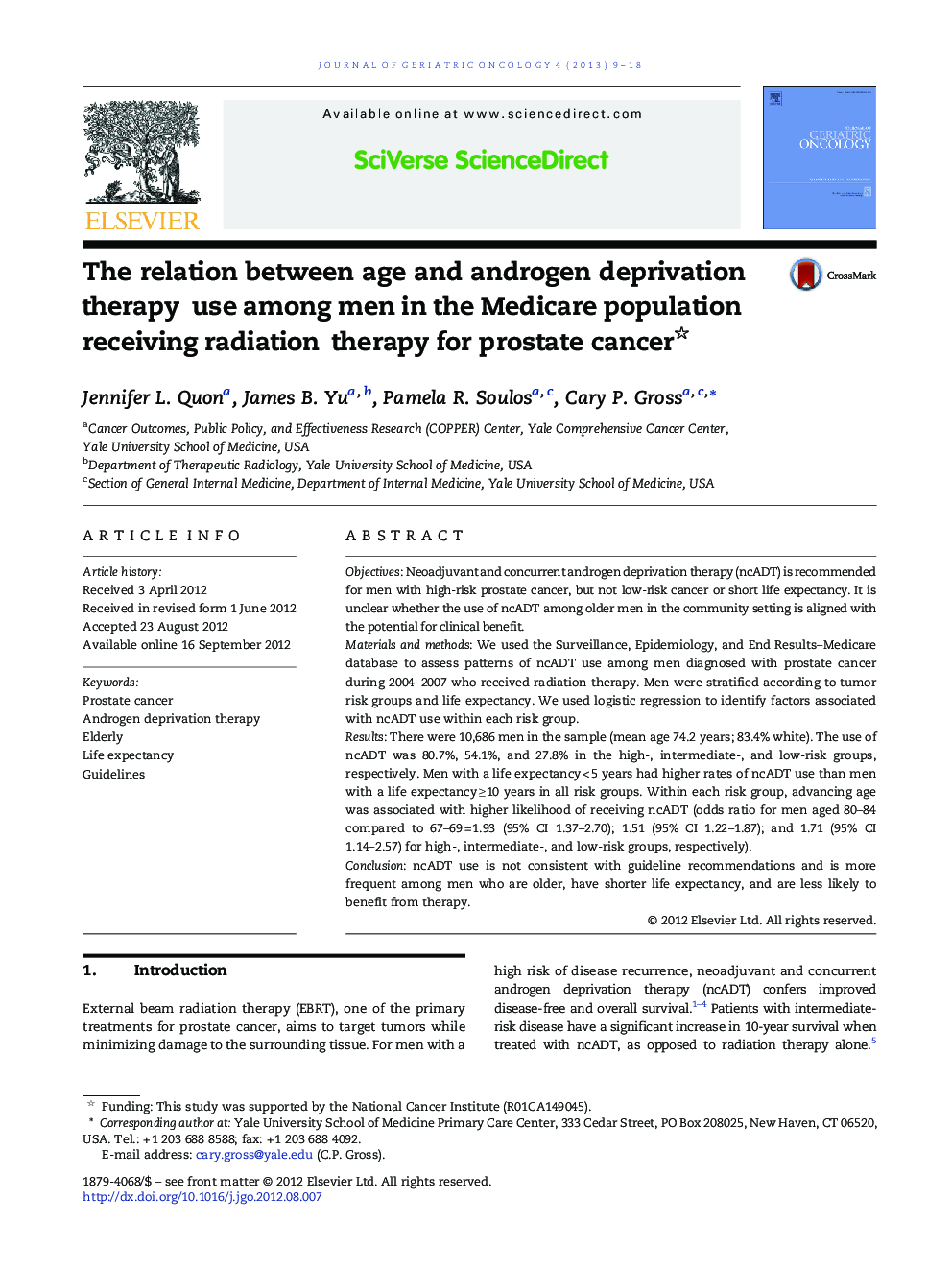| Article ID | Journal | Published Year | Pages | File Type |
|---|---|---|---|---|
| 1912897 | Journal of Geriatric Oncology | 2013 | 10 Pages |
ObjectivesNeoadjuvant and concurrent androgen deprivation therapy (ncADT) is recommended for men with high-risk prostate cancer, but not low-risk cancer or short life expectancy. It is unclear whether the use of ncADT among older men in the community setting is aligned with the potential for clinical benefit.Materials and methodsWe used the Surveillance, Epidemiology, and End Results–Medicare database to assess patterns of ncADT use among men diagnosed with prostate cancer during 2004–2007 who received radiation therapy. Men were stratified according to tumor risk groups and life expectancy. We used logistic regression to identify factors associated with ncADT use within each risk group.ResultsThere were 10,686 men in the sample (mean age 74.2 years; 83.4% white). The use of ncADT was 80.7%, 54.1%, and 27.8% in the high-, intermediate-, and low-risk groups, respectively. Men with a life expectancy < 5 years had higher rates of ncADT use than men with a life expectancy ≥ 10 years in all risk groups. Within each risk group, advancing age was associated with higher likelihood of receiving ncADT (odds ratio for men aged 80–84 compared to 67–69 = 1.93 (95% CI 1.37–2.70); 1.51 (95% CI 1.22–1.87); and 1.71 (95% CI 1.14–2.57) for high-, intermediate-, and low-risk groups, respectively).ConclusionncADT use is not consistent with guideline recommendations and is more frequent among men who are older, have shorter life expectancy, and are less likely to benefit from therapy.
